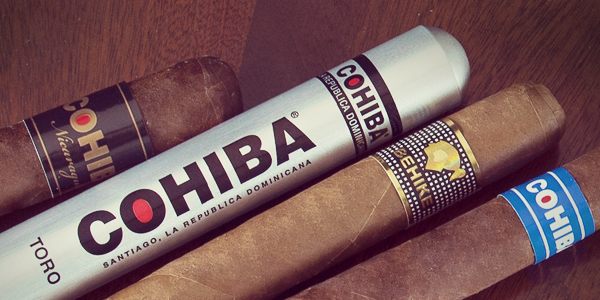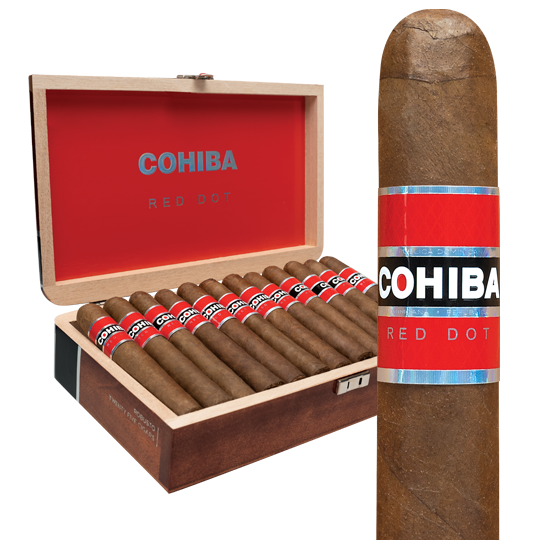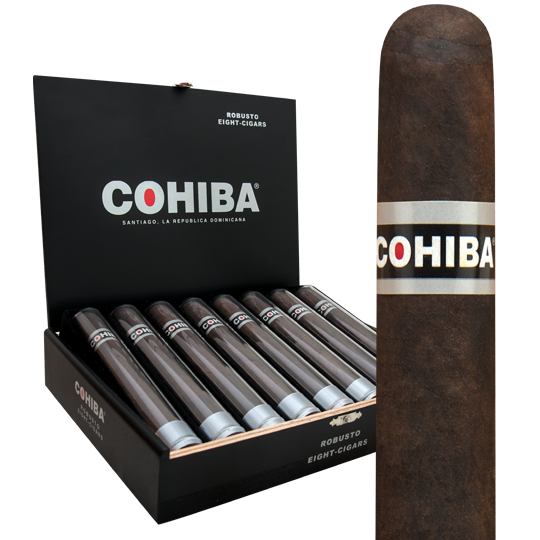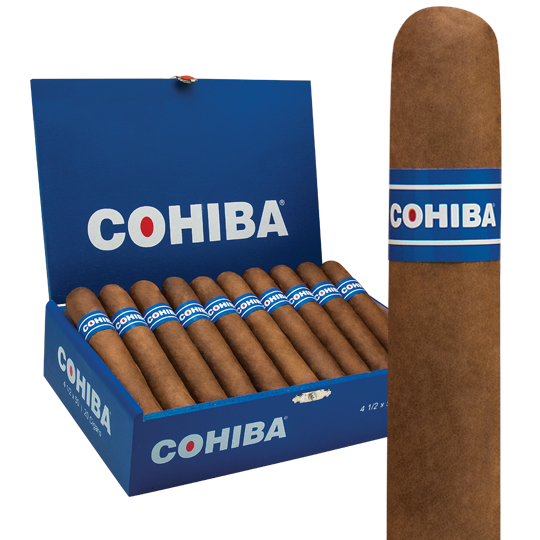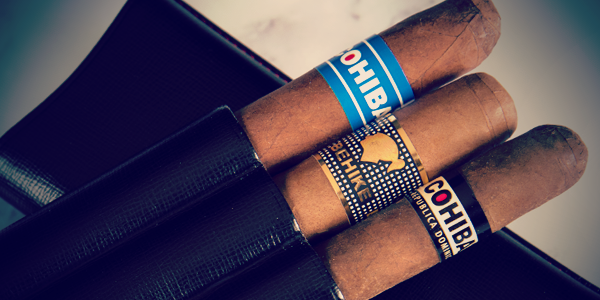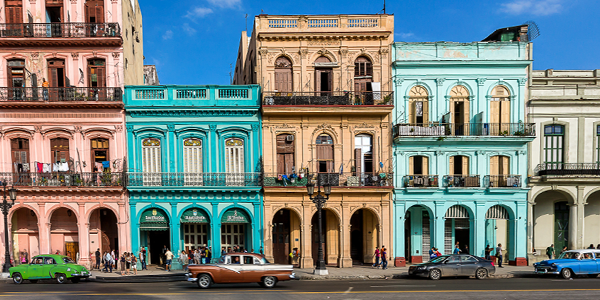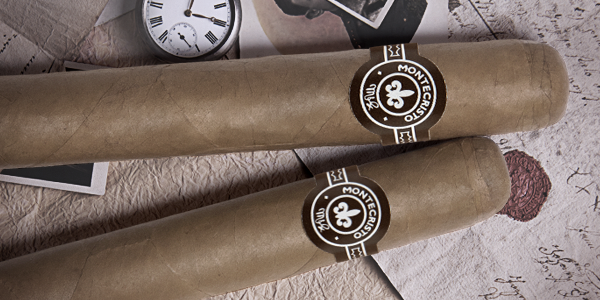History of Cohiba Cigars
If you’ve been keeping up with our tales of cigar history, you know that Cuba is the cradle of just about everything in what we love to smoke today. If Cuban cigars themselves are no longer the undisputed leader in the world, their legacy – and the Castro revolution -- inspired the development of the free world in making great puros.
In Cuba itself, what was left of the cigar industry also changed radically after Fidel came to power in 1959. Minor brands tended to disappear, while the iconic labels continued to prosper and be supported by an increasingly uncertain crop of tobacco grown on the island. Montecristo, Romeo y Julieta, H. Upmann, and Partagás all kept pace while some new brands were born.
If there is one moment that defines post-revolutionary Cuban cigar history, it is when Fidel himself smoked a cigar given to him by his bodyguard in 1965. The Cohiba cigar was born soon after.
Cohiba, the word for tobacco in the language of the indigenous Taino people of Cuba, as we all know today, has become the most sought-after brand among Cuban cigars.
The story begins innocently enough. As Castro and his bodyguard were riding together in a car, the bodyguard was puffing on what he told El Comandante was a ‘fuma’ made by a friend, Eduardo Rivera Irizarri, who worked in a cigar factory. Castro asked for one of the cigars and liked it so much that he ordered more.
It became his regular smoke and he gave them out to his main guys, including Ernesto ‘Che’ Guevara. The cigar, a long, thin panatela was also sent to other world leaders who smoked cigars, among them Omar Torrijos of Panama, Josip Broz Tito of Yugoslavia, and Egypt’s Gamal Abdel Nasser.
The ‘fuma,’ or ‘fuma de tabacalera,’ meaning ‘cigar of the cigar maker,’ would be made with a twist, or pigtail, at the cap. Often, this was the cigar that the cigar roller would make and take home, sometimes using scraps left over from the daily production.
In 1966, when Castro decided to create the El Laguito factory for the production of Rivera’s cigar, the Cohiba Lancero was created (originally it was called the ‘El Laguito #1’), keeping the signature pigtail. This also marked the invention of the Lancero shape.
The cigar has a 38-ring gauge and is 7 1/2 inches long. It’s a fairly mild cigar of medium body and is complex in flavor, always a notable accomplishment in a thin cigar. Today, you’ll get leather, and some floral notes, but the draw can be tight.
The Cohiba brand was officially launched in 1968.
The original production of Cohiba is not quite the same cigar given to Castro by his bodyguard. When the factory was established, Castro ordered that a special tobacco blend be created. The tobacco for Cohiba cigars today comes from just 10 fields totaling 700 acres in the Vuelta Abajo region of Pinar del Rio, on the far west side of Cuba. That tobacco is exclusive to the Cohiba brand and, at the El Laguito factory, it undergoes a third fermentation in wooden barrels. This results in a smoother flavor.
In 1982, Cohiba cigars went public. This coincided with the World Cup of soccer being held in Spain that year. The three vitolas available were the Panetela, the Corona Especial and the Lancero. Seven years later, the Robusto (4 7/8 x 50), Exquisito, (5 x 33), and Espléndido (7 x 47) were added. These first half dozen shapes form Cohiba’s Linea Clasica, or Classic Line.
Today, Cuba’s Cohiba has six lines, including the Linea 1492 that contains the ‘siglos,’ and the ‘Behike’ series. The Behike – which comes in a Robusto, and two Corona Gorda shapes, has, in many ways, become the new, stronger-flavored vanguard of the brand. The strength of each line varies, but the brand goes from medium to full in terms of flavor options.
One common trait among the Cuban Cohibas? They’re not cheap, ranging in price from as little as $11.50 for a Siglo I (4 x 40) to more than $100 for several of the shapes. Now, just try to find them.
What you can find, as a result of the confusing question of trademarks concerning Cuban cigar brands, is the non-Cuban Cohiba. The non-Cuban Cohiba marque was registered in the United States by the General Cigar Company in 1978. The cigars have been made in the Dominican Republic (DR) on a large scale since the Cigar Boom of the 1990s.
Because of the design on the cigar band, the Cohiba made by General Cigar became known as the “red dot Cohiba.” After a long legal battle, the U.S. courts have ruled that the brand must revert to Cubatabaco, the state-owned cigar ministry, in the event that the U.S. embargo against Cuba is lifted and the Cuban Cohiba can be sold in the U.S. Until then, assuming that ruling holds upon appeal, you can buy the non-Cuban Cohiba and enjoy a great cigar for much less than the original version.
A Cohiba Churchill, 7 x 49, from the DR, for example, sells for about a third the price of the Cuban Espléndido. The Dominican version is a medium-strength cigar with lots of cedar that is a bit drier in finish than the Cuban version. This one has a delicious Cameroon wrapper with Dominican filler. The price spread applies to all such comparisons, and the non-Cuban Cohiba now has versions from Nicaragua and Honduras using tobacco blends from all over. There’s a lot more variety here. On the stronger and larger side, give the Cohiba Nicaragua 60, 6 x 60, a try. Rustic with floral notes, this is a bargain at about $16.
Dual citizenship is common among legacy Cuban brands and Cohiba is no exception. There’s some fun to be had here as you can make your own comparisons and value judgments between the two versions. Cuba si? Maybe. Cohiba si? Definitely.

